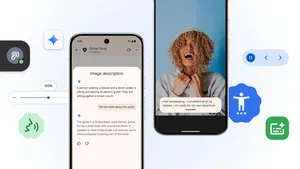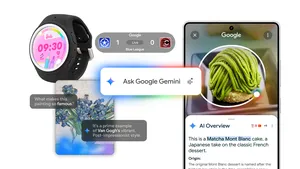Our commitment to a more accessible world
Thirty years ago, the Americans with Disabilities Act was passed to guarantee people would be protected against discrimination on the basis of disability in all areas of life—such as jobs, education and transportation. Since that milestone moment, there have been huge strides made to make the world more accessible for people with disabilities, from the creation of accessible parking spaces to the broader usage of captioning technology.
But as the world continues to change, people with disabilities face new challenges. On the anniversary of the ADA, we’re taking a moment to reflect on these issues, as well as share some information about how Google is working to make the world more accessible for all.
Search trends reflect an evolving understanding
Over the past three decades, the world gained a greater understanding of what disability means, and how disability affects different communities in a myriad of ways. Search trends can shed a light on this emerging understanding. For example:
Searches for ableism and ableist language are at an all time high—an encouraging sign for the disability rights movement.
In the past month, we’ve noticed an uptick in Google searches around “black mental health,” which hit record highs globally in June. The long-term impact of mental health conditions are often overlooked as a form of disability. And race can have a compounding effect for people with disabilities.
The world is searching disability pride parades at record highs, with the U.K. searching it most, as people continue to celebrate what their disabilities mean to them.
Animated image shows black text on white background that reads: "And we're seeing growing worldwide interest in the topic of ableism in 2020." The word "ableism" is highlighted.

The effect of the global pandemic
The shift to remote life has given some people with disabilities the opportunity to engage more comfortably with work, healthcare, socializing, and culture and social institutions. But COVID-19 has created a set of distinct and profound challenges for people with disabilities, many of whom are more physically isolated and at-risk than ever before.
Technology can help create learning opportunities, allow for remote work and create connections with loved ones. For example, many people who are Deaf or hard of hearing may rely on lipreading to follow conversations, but facemasks make that virtually impossible. This is evident as searches for clear face mask are at all time highs. With Live Transcribe, an Android app that transcribes conversations in real time, people are able to follow conversations and get the information they need even while wearing masks.
As more learning takes place online, technology is helping make content more accessible. Students and educators around the world who are Deaf or hard of hearing have navigated the transition to distance learning with tools like automatic captions in Google Meet and Google Slides. For people who are blind or low vision, using Talkback braille keyboard, a new keyboard integrated directly into Android, means they can quickly communicate using braille—whether it’s in an email, a text message, or on social media—without additional hardware.
To help provide information for people with disabilities during this time, we created a set of Resources for Vulnerable Communities on our COVID-19 resource hub and accessibility resources for education on Teach from Anywhere. These sites provide expert guidance and support for groups facing higher risks to their safety and wellbeing, including resources for disability and neurodiverse communities, students with disabilities, domestic and sexual violence survivors, and people in recovery.
Google’s role in creating a more inclusive world
In addition to our technology, we’re committed to using our platforms to raise awareness of these issues and amplify the voices of a diverse range of people with disabilities. This includes true intersectional representation and considering disability and race together in our efforts to create change. For example, when we made our commitments to racial equity, we shared a fully inclusive video that has audio descriptions, captions and talks about how black mental health matters.
Visit our Accessibility stories collection to see stories of how people are using technology in creative ways to make life better for people with disabilities and those around them. As we celebrate the 30th Anniversary of the Americans with Disabilities Act, we’re even more committed to creating a truly accessible and inclusive world.






